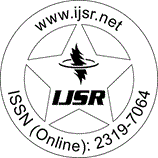Downloads: 1 | Views: 98 | Weekly Hits: ⮙1 | Monthly Hits: ⮙1
Case Studies | Radiology and Medical Imaging Sciences | India | Volume 14 Issue 2, February 2025 | Popularity: 4.6 / 10
Rare Case of Abnormal Signal in Corpus Callosum
Dr. Grusha Kasham, Dr. Sarfaraz Shaikh, Dr. Madan Manmohan
Abstract: Transient splenial lesion of the corpus callosum can be observed in various diseases such as cancer, drug use, metabolic disorders, and cerebrovascular disorders, as well as in patients with infectious diseases. During the coronavirus disease 2019 (COVID - 19) pandemic, there were increasing reports of these lesions being detected on brain imaging tests performed in patients with neurological symptoms. On brain magnetic resonance imaging, findings suggestive of cytotoxic edema are observed in the splenium; these are known to disappear with improvement of clinical symptoms. Cytokinopathy caused by infection increases the permeability of the blood?brain barrier and activates the glial cells of the brain to induce cytotoxic edema. Most patients have a good prognosis. The causes, mechanism, diagnosis, treatment and prognosis of transient splenial lesions of the corpus callosum will be summarized in this review.
Keywords: Transient splenial lesion of the corpus callosum, cytotoxic edema, infection
Edition: Volume 14 Issue 2, February 2025
Pages: 1356 - 1359
DOI: https://www.doi.org/10.21275/MR25222130728
Please Disable the Pop-Up Blocker of Web Browser
Verification Code will appear in 2 Seconds ... Wait
